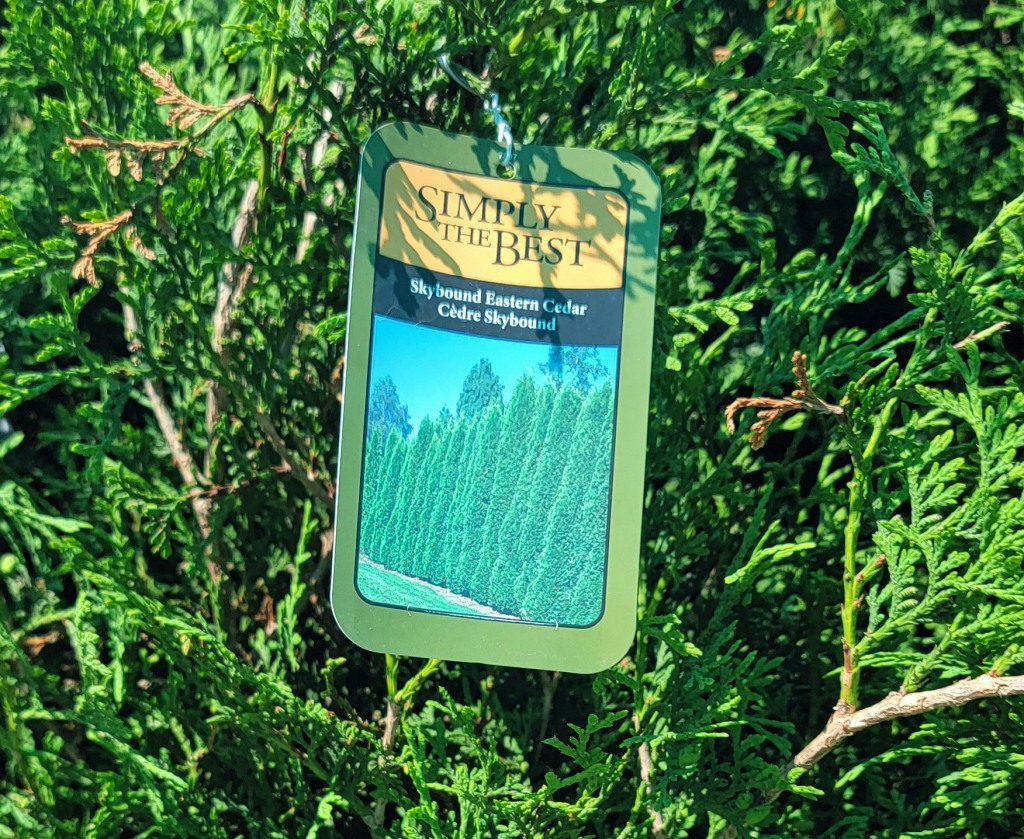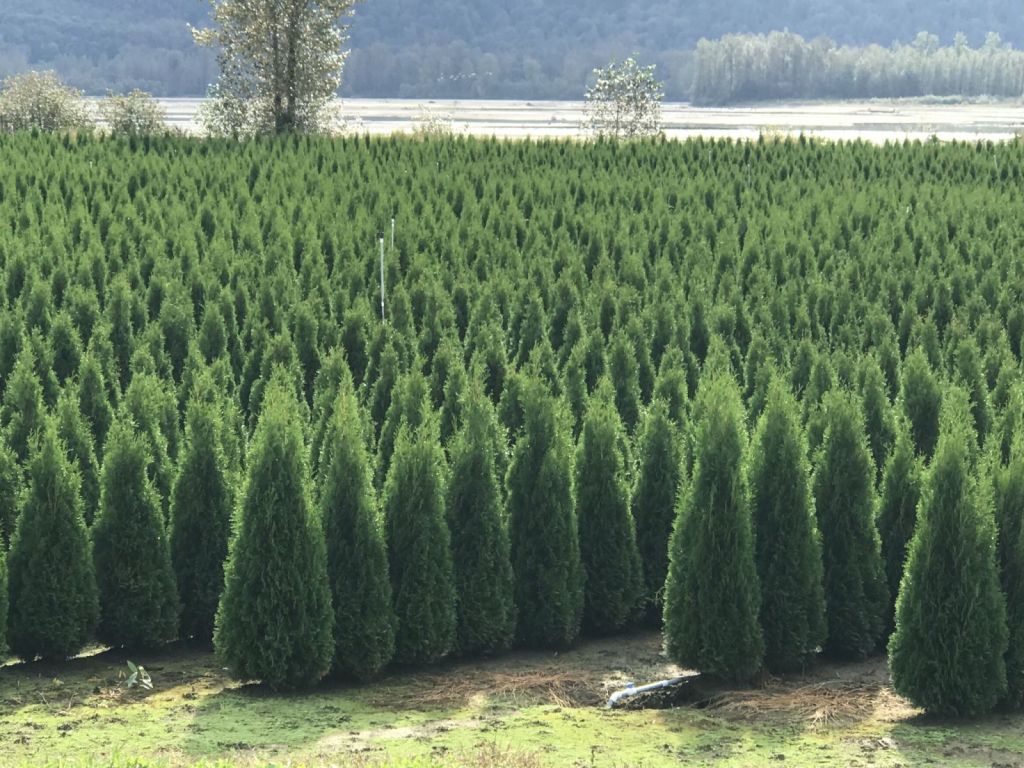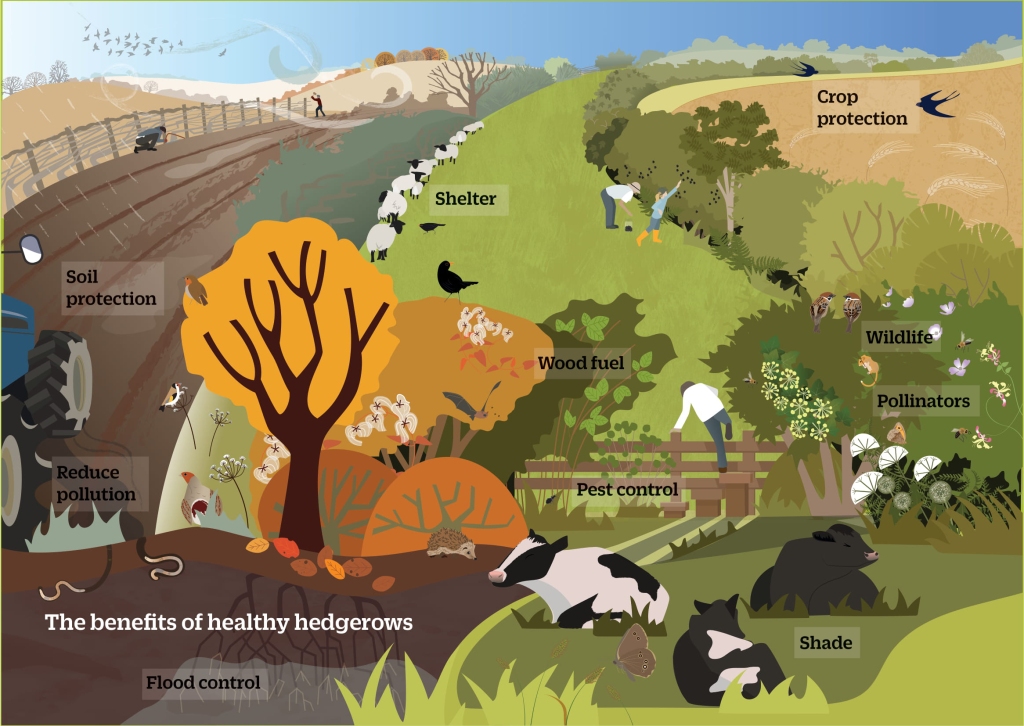By Emma Murphy, Master Gardener
I see this question every year on our Master Gardeners of Ontario Facebook group – someone goes to their local big box store in the spring, purchases emerald cedars (usually Thuja occidentalis ‘Smaragd’ or ‘Brandon’) to create an instant hedge and within 6 months to a year they are browning and dying and people ask what they are doing wrong.
What’s the Issue?
Both these cedars are native to North America. So-called “Emerald Cedars” are usually Thuja Occidentalis ‘Smaragd’.
FUN FACT – Smaragd is the Danish word for “emerald”.
According to some British Columbia (BC) growers Thuja Occidentalis ‘Brandon’ supposedly grows slightly faster and is bushier and hardier.
Both grow in a columnar shape. This spring I also saw Thuja occidentalis ‘Skybound’ in my local big box store, which is apparently hardier than the ‘Brandon’ cultivar.

In general I don’t recommend any of them for Ontario gardens, and this is why.
Emerald cedars arrive by the truckload each spring from BC growers, where they are grown in cooler summer temperatures with abundant rainfall (compared to Ontario).
Ontario’s summer heat and increasing drought conditions simply cannot support these shrubs; Ontario winters are also a challenge because of frigid temperatures and drying winds causing desiccation or moisture loss of needles. Ontario’s more humid conditions also result in fungal diseases affecting the shrubs.

Generally seen at big box stores, they are often poorly transported across the country with no water, completely root bound, and poorly-maintained at the stores, and stressed cedar (hey you’ve moved it to a hot Ontario summer from where it was born) often means they die over the summer or in winter even if you care for it.
Bigger is Not Better, and Other Problems
Also, bigger is not better, as they often don’t survive transplanting, and you see a lot of dead or dying brown emerald cedars. If you really want a large emerald cedar (6-7 feet) you should be paying good money from a reliable year-round nursery, not a big box store. I speak from experience as I tried to create a hedge at my previous house in Kitchener.
If you do insist on planting them they must be in full sun. Make sure they get plenty of water in their first year of growth, right up to when the snow flies. A thick layer of mulch will help them to retain that moisture as well. Come winter time, protect them with a layer of burlap to protect them from heavy blankets of snow, which can bend or snap delicate branches.
What’s the Alternative?
For me that’s way too much work. If you are looking to create a visual barrier or hedge I would recommend planting Ontario-grown white cedars (also Thuja occidentalis). It is inexpensive and often dug from ‘native plantations’ that are bare root seedlings.

Finding Ontario Eastern white cedar means that the tree was grown in Ontario which ensures a good adaptation to our climate. They grow well in all soils – from clay to sandy, in full sun to part shade. After planting, trees need regular watering, particularly during dry periods, for the first few years. Once established white cedars are low maintenance and very resistant to issues.
There’s no instant hedge here – they take a few years to settle in but once they have you can expect up to a metre of new growth each year (in the third year). Plant ones that are a metre high or less to start – in this case bigger doesn’t mean better as they will take longer to settle in. There are quite a few companies that will also come and actually trench and put in the cedar for you, or just sell you the plants. Just Google “Ontario white cedar” and several companies will show up.
Or…you can look for other hedging choices like Skyrocket Juniper (Juniperis scopulorum ‘Skyrocket’) or if you have shadier conditions – Japanese Yew (Taxus cuspidata ‘Capitata’) or Hick’s Yew (Taxus x media ‘Hicksii’). I’m excited that the Canada Yew (Taxus canadensis) is finally also being propagated in Ontario and will be a choice in the future.
Another Option – Creating a Native Hedgerow
I’ve been looking at a hedge to provide some shielding from my neighbour’s property so I explored the idea of a native hedgerow in a Master Gardener blog in January this year. Here’s one of the good resources that I was looking at from the Ottawa Field Naturalists’ Club.

They suggest the ideal hedgerow is
- Planted with a variety of berry- and seed-bearing shrubs for food
- Interspersed with cedar for added cover
- Thick, bushy, largely unpruned and entangled with vines
Whatever you choose to do, there are many options that are better than “emerald cedars”.
